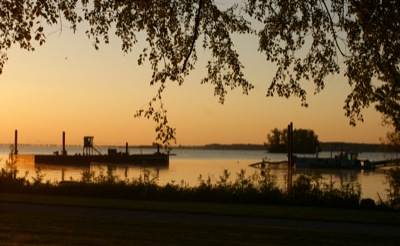Thursday, May 10th, 2012
Officials explain alum treatment
By Nancy Allen
Ohio Department of Natural Resources Director Jim Zehringer said it was never the state's intention to miscommunicate information about this year's alum treatment on Grand Lake.
Zehringer and other state representatives met with the editorial board of The Daily Standard on Wednesday.
The director said he was upset with the term "miscommunication," which headlined a story in Saturday's paper detailing why the state used the term whole lake when describing the recent alum treatment. Only the center of the lake was treated, just as in 2011.
"We want to make sure they, Mercer County residents, get the truth," Zehringer said of the headline. "We're always going to be honest and open and do what's best for Grand Lake."
State officials said Wednesday the term whole lake was used because wave action disperses the alum throughout the lake, giving a "lake-wide effect." The treatment in 2011 was termed "partial."
Glen Cobb, deputy director of recreation and resource management at ODNR, said the state wasn't sure how well the alum would move through the lake prior to receiving results from last year's treatment.
"We found out after that the alum traveled throughout the lake, and with that knowledge, we found we didn't need to apply it to the entire surface," Cobb said. "It does move, so it impacts the entire lake."
Zehringer said the state tries to have "open blinds" communication with local officials, adding that state officials meet regularly with members of the local Lake Restoration Commission.
Carlo LoParo, chief of communications for ODNR, said the project could have been better explained.
"We did a poor job communicating with you folks," LoParo said when pressed by the newspaper on why the state failed to tell the public the treatment area would be the same as last year's.
"We didn't use the word dissipate and we apologize," Zehringer said.
- Nancy Allen



